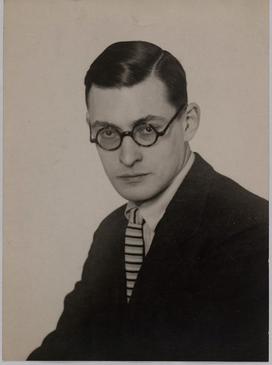Raymond Queneau facts for kids
Quick facts for kids
Raymond Queneau
|
|
|---|---|
 |
|
| Born | 21 February 1903 Le Havre, France |
| Died | 25 October 1976 (aged 73) Paris, France |
| Occupation | Novelist, Poet |
| Nationality | French |
| Education | University of Paris |
| Signature | |
 |
|
Raymond Queneau (born February 21, 1903 – died October 25, 1976) was a French writer. He wrote novels and poems. He was also a critic and an editor. Raymond Queneau helped start a group called Oulipo. This group explored new ways of writing using rules and math. People knew him for his cleverness and funny, sometimes sarcastic, humor.
Contents
About Raymond Queneau
Raymond Queneau was born in Le Havre, France. He was the only child of Auguste Queneau and Joséphine Mignot. In 1920, he moved to Paris. He studied at the University of Paris. In 1925, he earned his first degree in philosophy.
From 1925 to 1926, Queneau served in the military. He was a zouave, which was a type of French soldier. He served in Algeria and Morocco. After returning to Paris, he worked different jobs. He was a bank teller and a tutor. He also wrote for a newspaper column.
In 1928, he married Janine Kahn. Her sister was married to André Breton, a leader of the Surrealist art movement. Raymond and Janine had a son named Jean-Marie in 1934. Jean-Marie later became a painter.
Queneau joined the army again in 1939. He was released in 1940. He had a long career writing and editing. Raymond Queneau passed away on October 25, 1976. He is buried in Juvisy-sur-Orge, outside Paris.
Queneau's Career
Raymond Queneau worked for the Gallimard publishing company for many years. He started as a reader in 1938. This meant he read books to decide if they should be published. He later became a general secretary. In 1956, he became the director of a big encyclopedia project.
Queneau also worked as a translator. He translated books from other languages into French. For example, he translated The Palm-Wine Drunkard by Amos Tutuola.
One of Queneau's most famous novels is Zazie in the Metro, published in 1959. This book became very popular in France. A film based on the book was made in 1960. Zazie is special because it uses everyday, spoken French. It even starts with a funny, made-up word, "Doukipudonktan." This word sounds like "Why does it stink so much?" when spoken quickly in French.
Queneau was very interested in mathematics. He thought math could inspire writing. In 1960, he co-founded the Oulipo group. Oulipo stands for "Ouvroir de littérature potentielle," which means "Workshop of Potential Literature." This group explored how to create literature using strict rules and mathematical ideas.
One of his interesting works is A Hundred Thousand Billion Poems. In this book, Queneau wrote 10 sonnets (a type of poem). Each line of each sonnet could be swapped with lines from other sonnets. This meant readers could create a huge number of different poems. Queneau calculated that it would take someone millions of years to read all the possible combinations!
Another important work by Queneau is Exercises in Style. This book tells a simple story. It's about a man seeing the same stranger twice in one day. But the amazing part is that Queneau tells this short story in 99 different ways! It shows how many different styles can be used in storytelling.
Raymond Queneau's books are published by Gallimard.
Queneau and the Surrealists
In 1924, Raymond Queneau briefly joined the Surrealists. This was an art and literary movement. Surrealists were interested in dreams and the unconscious mind. They often used "automatic writing," where they wrote without thinking. Queneau didn't fully agree with all their ideas, especially about automatic writing and politics.
He became friends with other writers like Michel Leiris and Georges Bataille. However, by 1930, Queneau started to move away from the Surrealist group. He didn't join the French Communist party like some Surrealists did. Instead, he joined other groups that supported left-wing ideas and were against fascism. He supported the Popular Front in France. He also supported the Republicans during the Spanish Civil War.
During World War II, when France was occupied by the Nazis, Queneau wrote for journals connected to the French Resistance. After the war, he continued to support left-wing causes. He spoke out against McCarthyism in the United States and against anti-communist actions in Greece.
Awards and Honors
- 1951: He was chosen to be part of the Académie Goncourt.
- 1952: He was chosen to be part of the Académie de l'humour.
- 1955–57: He was invited to be a judge at the Cannes Film Festival.
Queneau in Other Art
- The film Zazie in the Metro (1960) was based on his novel.
- Musician Pierre Bastien made a CD called Eggs Air Sister Steel. This title sounds like "Exercises in Style" and is based on Queneau's book.
- A visual interpretation of Exercises in Style was published in Germany in 2006.
- Composer José Evangelista wrote a song cycle called "Exercises de style" in 1997, using texts from Queneau's book.
See also
 In Spanish: Raymond Queneau para niños
In Spanish: Raymond Queneau para niños
- Georges Perec
- Miroglyph


